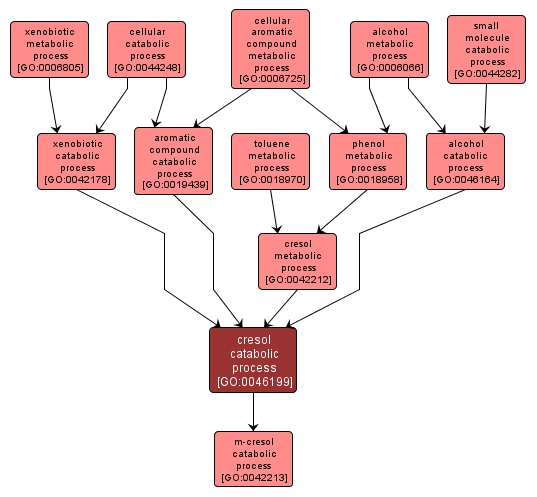| Desc: |
The chemical reactions and pathways resulting in the breakdown of cresol, a mixture of the aromatic alcohol isoforms o-, p-, and m-cresol, which is obtained from coal tar or petroleum. The isomers are used as disinfectants, textile scouring agents, surfactants and as intermediates in the manufacture of salicylaldehyde, coumarin, and herbicides as well as being a major component of creosote. |














